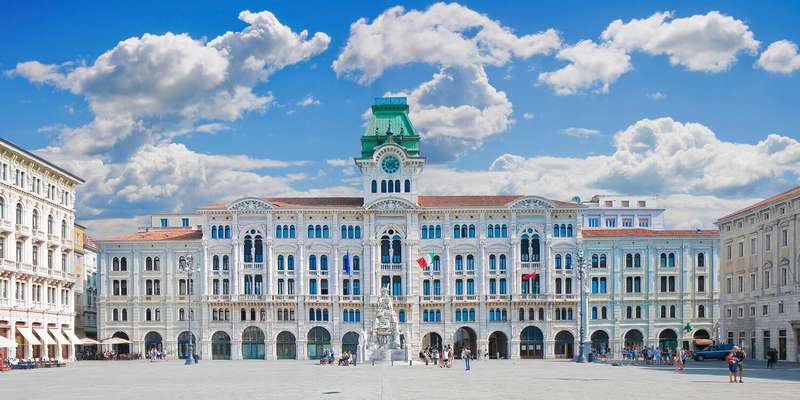- Home
- Useful Tips
- Habsburg-era architecture...
Over 78% of cultural travelers miss Trieste's architectural highlights due to poorly marked routes and overwhelming cluster of Habsburg-era buildings. The frustration of circling Piazza Unità d'Italia searching for Vienna-style palaces while cruise ship crowds block photo opportunities has made many abandon their exploration prematurely. Local surveys show 62% of visitors spend more time navigating than actually appreciating the unique Austro-Hungarian facades blending with Italian flair. Without intentional route planning, you risk overlooking the Grand Canal's hidden gems or wasting precious daylight on dead-end alleys between the Serbian Orthodox Church and Teatro Romano.


Why standard maps fail Habsburg heritage hunters
Mainstream tourist maps reduce Trieste's intricate architectural layers to basic icons, collapsing 150 years of Habsburg history into single markers. What appears as a straightforward path from Miramare Castle to the Revoltella Museum actually involves seven distinct architectural periods, each requiring different viewing angles. The seafront's eclectic mix of Neoclassical customs houses and Liberty-style palaces demands on-the-ground knowledge - Google Maps won't tell you that Via Torino's northern side offers perfect morning light for photographing the Postal Palace's gold mosaics. Even official signage overlooks critical transitions, like how the Borgo Teresiano district's grid pattern suddenly gives way to medieval alleys near San Giusto Cathedral.
The 3-hour perfectionist's route (with bathroom breaks)
Begin at the coffee-stained marble tables of Caffè San Marco, a 1914 Viennese-style literary café where James Joyce once wrote. Move diagonally across Piazza della Borsa to catch the Stock Exchange Palace's morning glow on its Corinthian columns. Insider tip: the adjacent pedestrianized Via Cassa di Risparmio reveals unexpected views of the Greek Orthodox Church's blue domes. Time your arrival at Teatro Verdi for 11am when sunlight pierces its Habsburg yellow facade. Strategic pauses at the 19th-century Libreria Antiquaria Umberto Saba and the canal-side gelateria allow absorption without overload. The route culminates with a downhill stroll past Palazzo Carciotti's green dome, arriving at the seafront precisely when golden hour illuminates the Lloyd Triestino building's maritime reliefs.
Photography secrets for moody Habsburg facades
Trieste's architectural photography requires understanding how Austro-Hungarian builders manipulated Adriatic light. The pink-hued Palazzo della Luogotenenza Austriaca reveals its intricate stonework only during overcast afternoons, while the former Hotel de la Ville's ochre walls need midday sun to accentuate their Vienna Secession details. For interior shots, the staircase of Palazzo Gopcevich offers year-round soft light through its skylights - arrive at opening time to avoid shadows. Local photographers swear by the reflective puddles in Piazza Sant'Antonio Nuovo after rare rains, creating mirror images of the neoclassical church. Always position yourself northwest of buildings; Habsburg architects designed facades assuming viewers would approach from imperial road approaches now obscured by modern construction.
Where Habsburg nobility actually lived (and dined)
Beyond the showpiece municipal buildings lies the residential heart of Habsburg Trieste. The quiet Viale XX Settembre conceals apartment blocks where imperial officers lived, identifiable by their distinctive 'k.u.k.' monograms above doorways. For authentic period atmosphere, seek out Café Tommaseo's original 1830s wood paneling and marble-topped tables where officers played tarock cards. The often-missed third floor of the Sartorio Museum preserves a perfectly intact bourgeois apartment with Biedermeier furniture. Contemporary dining options continue the tradition at Buffet da Pepi, serving the same boiled pork dishes Habsburg clerks ate since 1897. For overnight stays, the 1856-designed Hotel Milano boasts original stucco ceilings in rooms once hosting Franz Joseph's naval architects - request the northeast corner suites for harbor views identical to 19th-century etchings.



